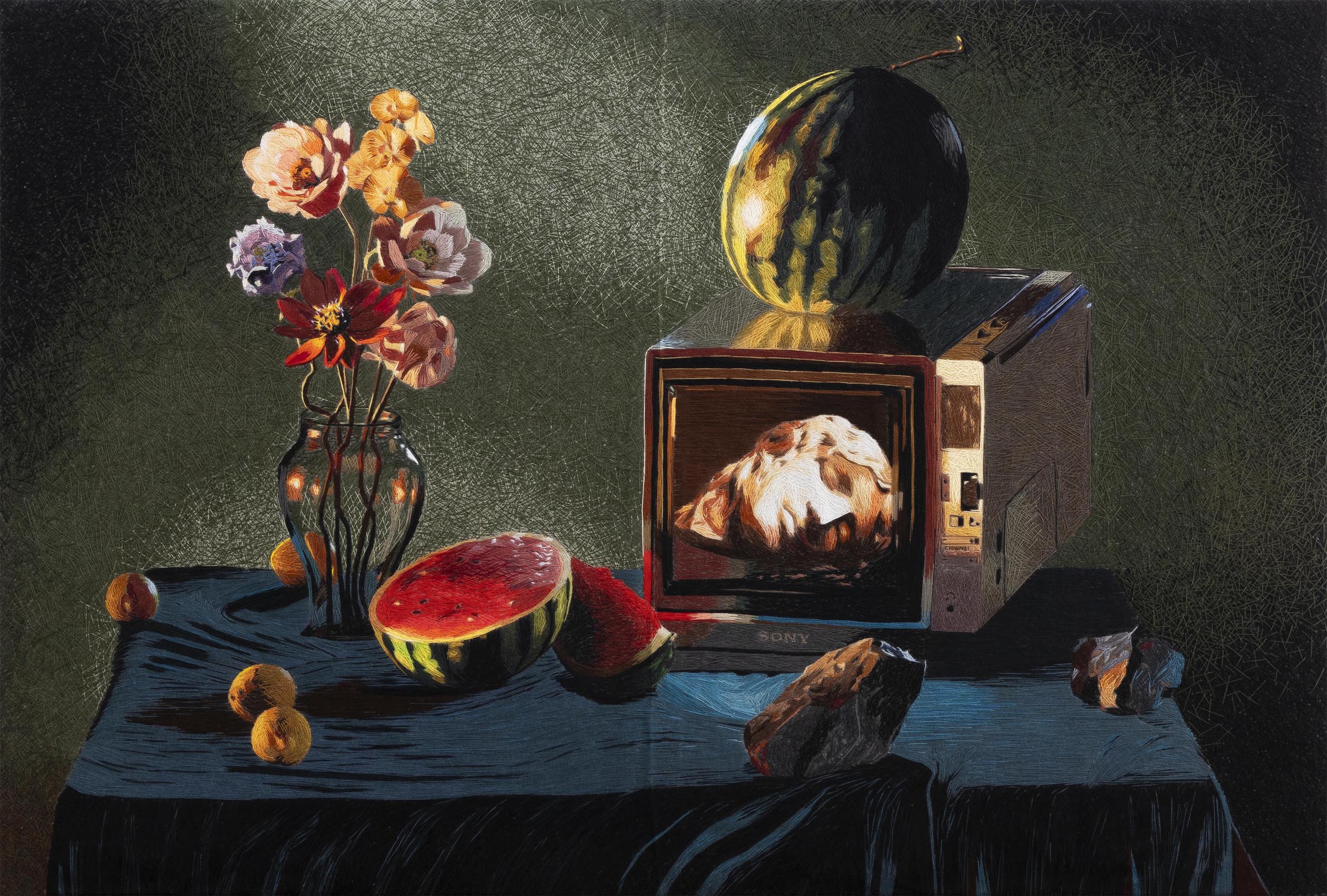Artist Statement
At the root of La vie silencieuse lies a fascination: that of Cécile Davidovici and David Ctiborsky for the still lifes of Giorgio Morandi, for his ability to make silence, the almost nothing, vibrate. To them, Morandi's attention to things and light, his repetition and minimalism, take his still lifes to a metaphysical level.
They asked themselves: how do you make still lifes today? What does it mean to observe an object, a fruit, a flower, in a world of commodities where technology generates so much distance and abstraction? What if that little studio room of Morandi's, this table, these objects and this light no longer really exist, swept up in the torrent of technology?
The two artists' approach is to start with the coldest, most abstract, most technological of objects and, at each stage, to gain intimacy and flesh. In the end, they hope, the objects will be so present, the real will be so real, that life will spill out from Cécile Davidovici's threads.
David Ctiborsky first works in a virtual studio, where he composes and digitally lights the scenes. He creates sets and models certain objects, but also "hunts" for 3D models of fruits and flowers on the Internet. These models are generally intended for interior design previews and kitchen catalogs. They were once real, living beings, but their appearance was inevitably standardized in order to be scanned and sold on the Internet. How can we bring them back to life? David Ctiborsky first seeks to revive them through careful composition and the caress of virtual light. At first he works under the influence of hyperrealist painter Ralph Goings and the deafening silence of his objects captured in roadside fast-food restaurants. But, almost in the same gesture, he forgets the photographic tradition from which hyperrealism draws its inspiration in favor of the pictorial tradition, thinking of Chardin, Juan Sánchez Cotán or Caravaggio.
Childhood memories find their way into the compositions, and a dialogue begins between modern and classical subjects. Plants are surrounded by minerals and manufactured objects. A plastic cup, a popular utensil from the age of obsolescence, sits alongside a stone on a broken plate. In other compositions, we encounter recording and playback devices: a VHS cassette in Souvenirs sur un drap mauve, an old cathode-ray television set in La vie silencieuse. In this last composition we find the only "human" presence in the entire series: the face of a sleeping statue seen through a screen. Silence still reigns, nothing has happened. The ultimate gesture, the ontological leap and the culmination of the process happen under the fingers of Cécile Davidovici, who brings the compositions to life through thread.
Letting herself be carried away by the spontaneity and expressiveness of her gestures, Cécile Davidovici sees the image come to life before her eyes: the transition from virtual to tactile is a birth. She uses an embroidery technique that she created and developed in previous years for portraits. Transposing this technique to objects for the first time, she embroiders them like faces. The interwoven-thread technique offers a slightly different perception, depending on the light and the angle of view: the work is never static, and things never cease to be expressive.
They are even endowed with an unsettling warmth: when we touch a fabric, we feel our own warmth, and it is this ancestral evidence of the tactile relationship with fabric that Cécile Davidovici has been exploring since the beginning of her career. To create works that are not meant to be touched, but to be seen: Cécile Davidovici always maintains a discreet, slightly nostalgic distance that, at the same time, sustains the warmth of desire. Fabric that calls, fabric that reminds, fabric that protects.
Cécile Davidovici and David Ctiborsky exorcise an anguish, that of a world without humanity, without life, without desire, that of a silent world.
In a way, they propose an eroticism of things; nostalgic and restorative.









